Research Outline
Outline of the main research topics that can be conducted using the Arctic Research Vessel
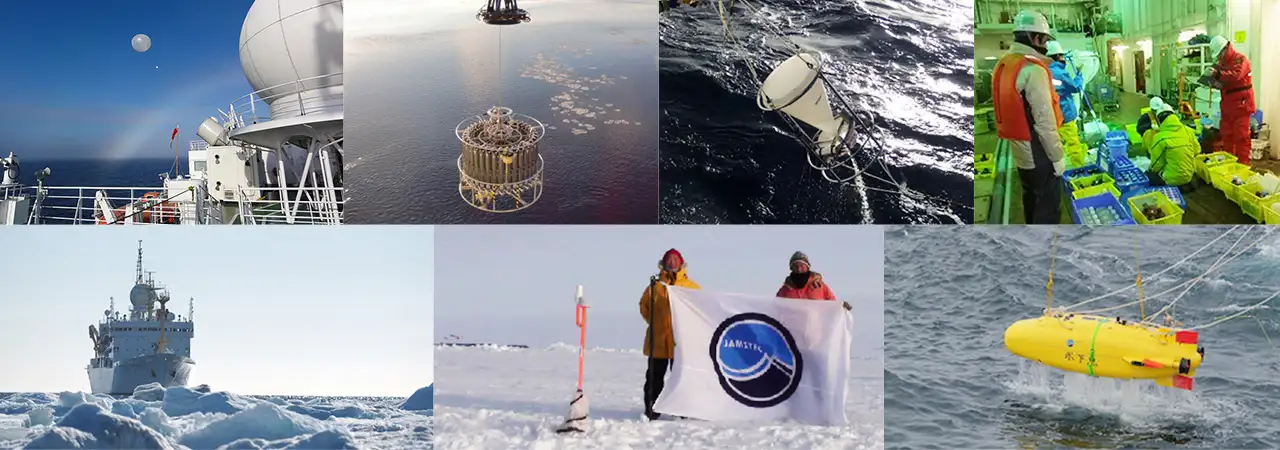
- The Arctic Ocean is experiencing unprecedented environmental changes due to global warming. It is now recognized that these changes will affect ecosystems, human society, and their livelihoods. There is an urgent need to improve our understanding of the mechanisms behind these changes and incorporate these findings into predicting future environmental changes. However, sea ice hampers our ability to collect the necessary data.
- Japan’s new research icebreaker will have the capability to fill this urgent need since it can operate in sea-ice-covered areas, thereby providing a new set of data. We will deploy this new research icebreaker as an international research platform, play a leading role in international projects, and contribute to the construction of their databases. We will promote international joint observational research focusing on the following research agendas:
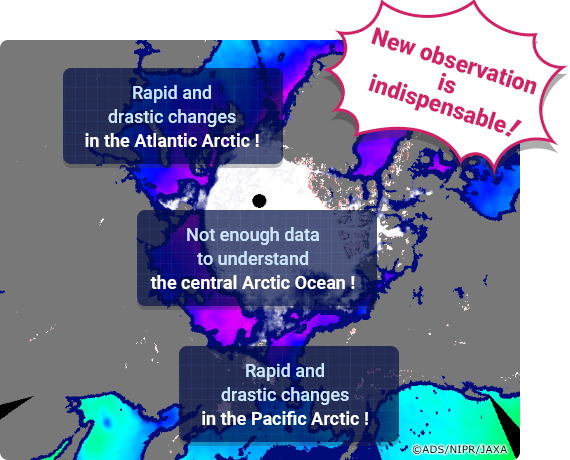
1. Understand the state of heat & freshwater budget and the biogeochemical cycle in the Arctic Ocean
The Arctic Ocean is a key ocean to understand not only the influence of freshwater impact since it receives a large inflow of river water (due to being surrounded by landmasses) but also the water mass changes since it mediates between the Pacific and Atlantic Oceans. It is already evident that heat and freshwater contents are increasing and water mass characteristics are changing.
High precision and multi-disciplinary observations, covering the entire Arctic Ocean, are invaluable in understanding the heat and freshwater budgets and biogeochemical cycles. The observations will also contribute to the assessment of impacts on ecosystems and climate change.
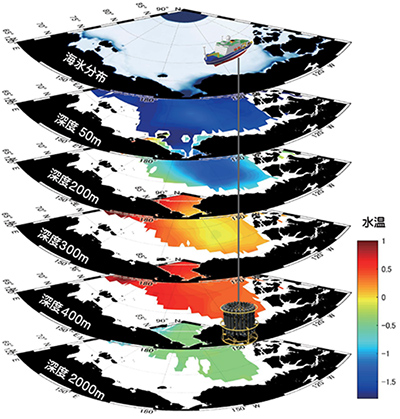
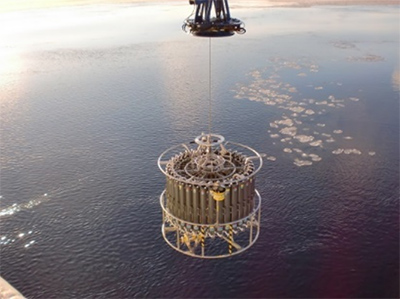
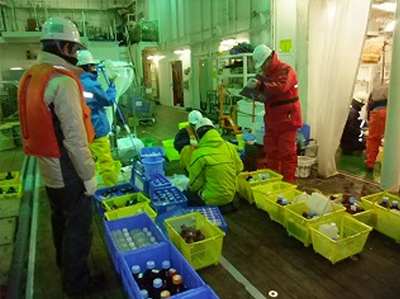
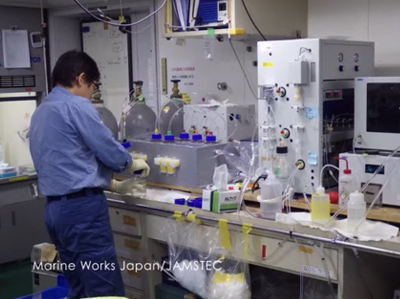
2. Reveal the atmosphere-sea ice-ocean interaction processes
Understanding the role of the sea-ice interaction with the ocean and atmosphere is essential to assess the ongoing changes in the Arctic Ocean. This interaction and related processes are complex and not easy to observe, due to the extremely challenging environmental conditions, leaving open the opportunities to pursue many lines of scientific investigation.
In-situ observations on sea ice, automated ice-drifting buoy observation, and sea ice-wave-ocean observations using drones and buoys in ice edge areas will lead to a better understanding of: 1) interaction processes among the atmospheric, sea ice, and oceanic boundaries, 2) ocean mixing, 3) biological activities under sea ice, 4) characteristics of sea ice themselves, and 5) wave-induced sea ice fluctuations. Such new knowledge will lead to more accurate predictions of environmental changes related to sea ice.
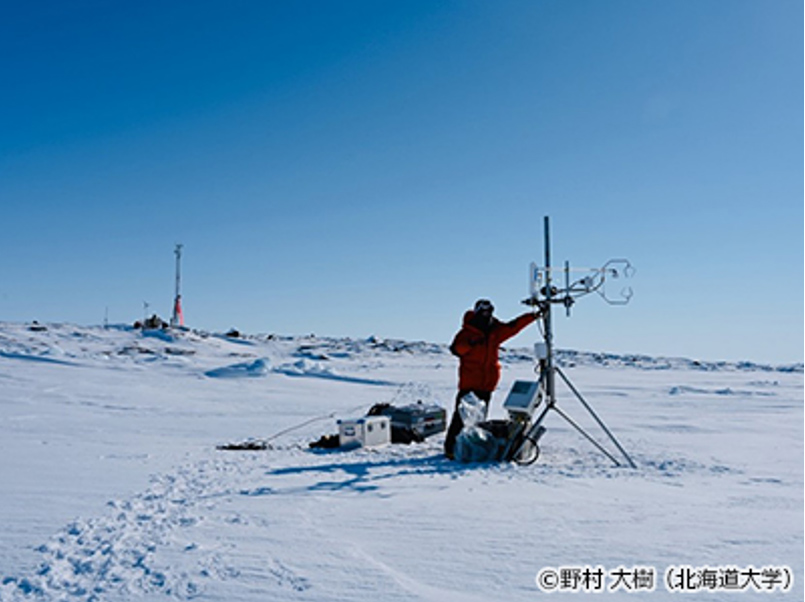
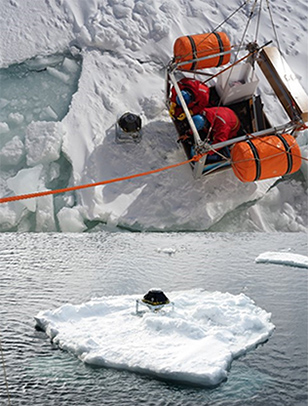
Courtesy of JCAR Arctic research ship utilization WG
3. Understand changes in biological production and ecosystems
The biological production and ecosystems of the Arctic Ocean, which are tightly connected to sea ice dynamics (e.g., formation and melting), are changing rapidly due to the reduction of sea ice caused by global warming. There is an urgent need to clarify these changes and integrate knowledge on their vulnerabilities to environmental changes and human activities for a deeper understanding and management of these ecosystems.
We will conduct field observations from ice-free open waters to areas covered with sea ice. We will better understand the ecosystem (diversity & vulnerability) through analysis and experiments using the collected biological samples.
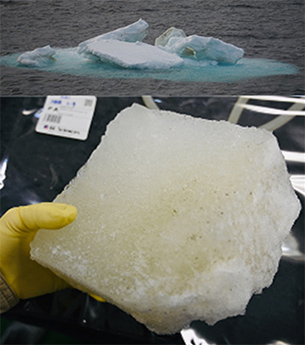
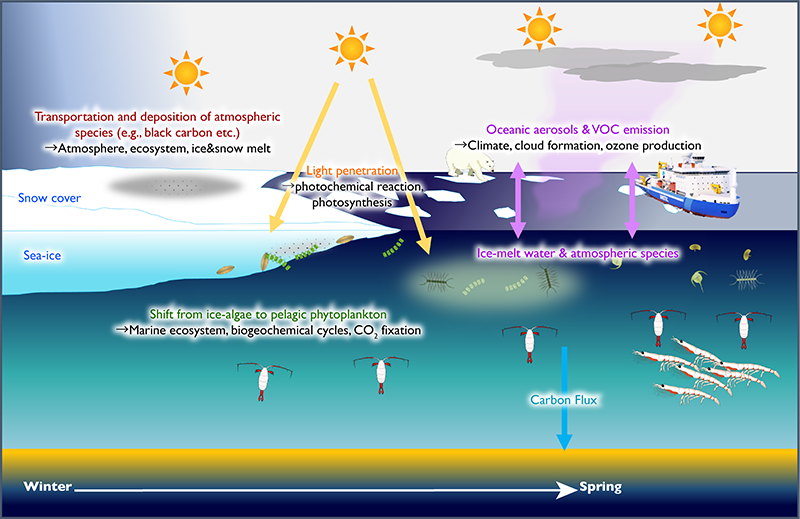
4. Observational studies of meteorology, climate, and atmospheric chemistry
We now know that the effects of climate change in the Arctic extend not only within the Arctic region but also toward mid- and low-latitudes, including Japan. There is concern that particulate matter such as soot (Black carbon) released into the atmosphere by human activities and forest fires in the mid-and low-latitudes may reach the Arctic region and affect environmental changes there. However, atmospheric observations over the ocean areas of the Arctic are limited due to sea ice. Detailed and highly accurate meteorological and atmospheric chemical observations are needed, and the findings must be disclosed and the data must be publicly accessible.
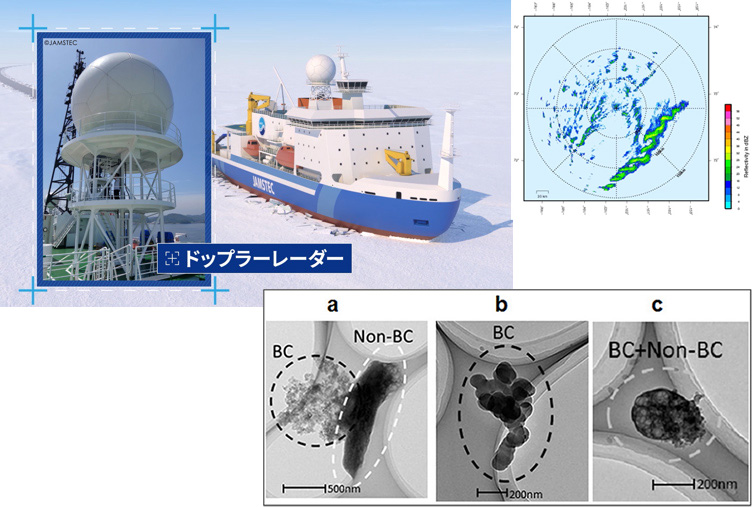
5. Develop instruments for under-sea ice observation
Although various kinds of technologies are being used to observe the Arctic Ocean, it is still difficult to obtain information directly under the sea ice without disturbing it. The physical and chemical states that exist under sea ice, the interaction between sea ice and the ocean, and biological activities under sea ice, all remain serious gaps in our knowledge.
We are developing an observation system to autonomously navigate under sea ice, acquire data and samples, and conduct basic research. This observation system will be installed on the new research ice-breaker and used for under-sea ice research in the Arctic Ocean.
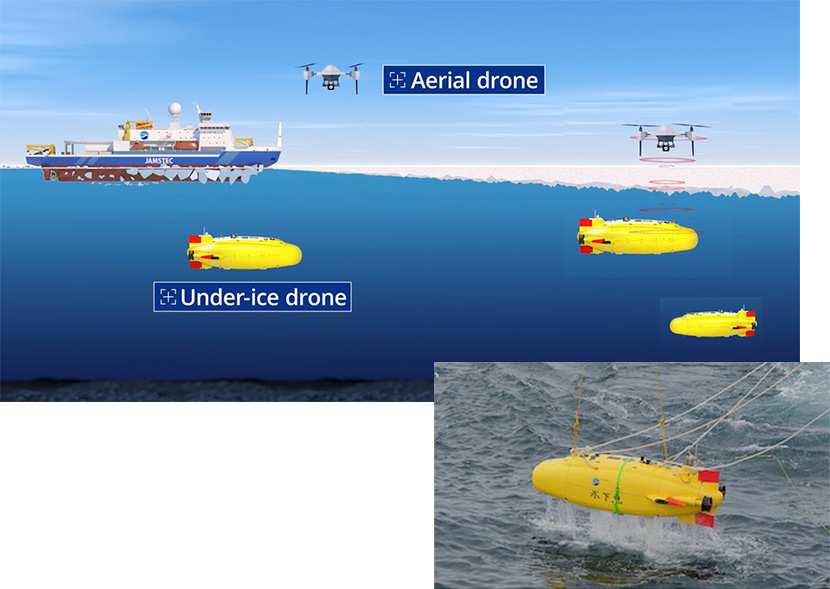
6. Paleoenvironmental reconstruction and clarify the tectonic history of the Arctic region
Understanding the role of the Arctic atmosphere, oceans, and cryosphere (snow and ice) in the global climate system, is aided by reconstructing past environments and examining the current environment. For example, understanding the relationship between cryospheric change and sea-level change associated with the warming/cooling era and clarifying changes in ocean circulation will lead to a better understanding of past human activities and more precise predictions for the future climate. By analyzing the sediment core samples, we can reconstruct past sea ice and glacier/ice-sheet distributions and ocean current systems in the Arctic Ocean. This will help to reveal new insights, such as the controlling factors of sea ice distribution and the tectonic history of the Arctic Ocean and its surrounding areas.
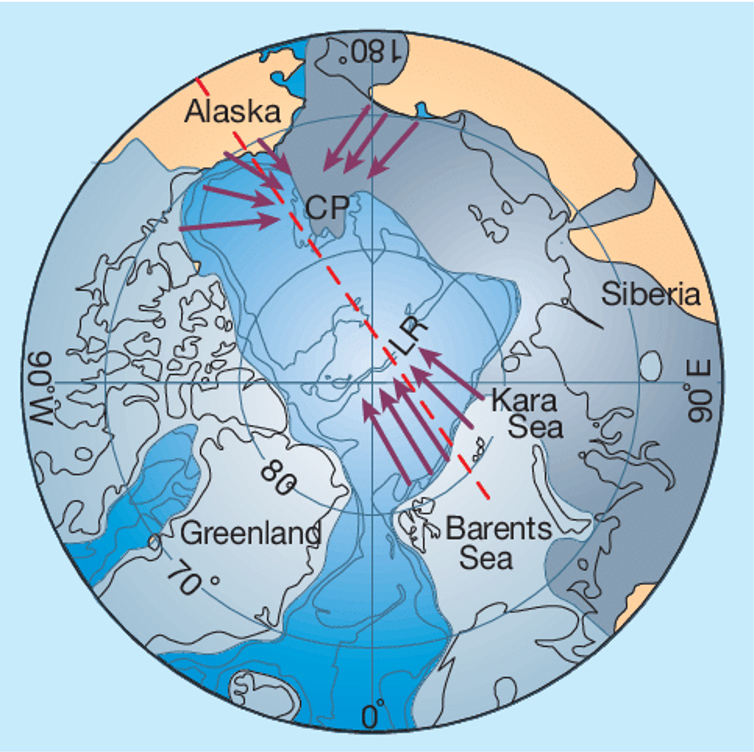
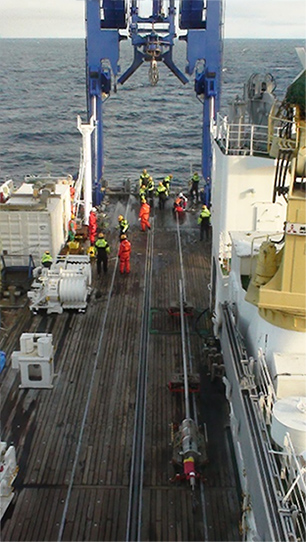
7. Improving the safety and economy of vessel operations in the Arctic Ocean
Due to fewer cruises than in ice-free seaways, we don’t have sufficient data on Arctic-going vessels, such as design, outfitting, operation, and maintenance. Arctic navigation involves harsh weather, low temperature, damage risk by sea ice, and environmental vulnerability.The operational risk and costs vary greatly depending on the route choice according to sea ice conditions.
New Arctic Research Vessel will accumulate more data and knowledge on ice navigation and contribute to improving the safety and economy of Arctic shipping and fostering ice-expert seafarers.
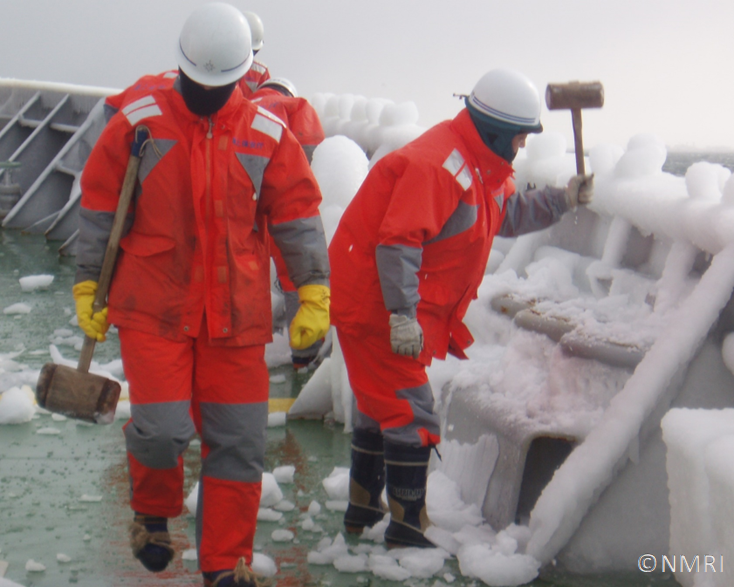
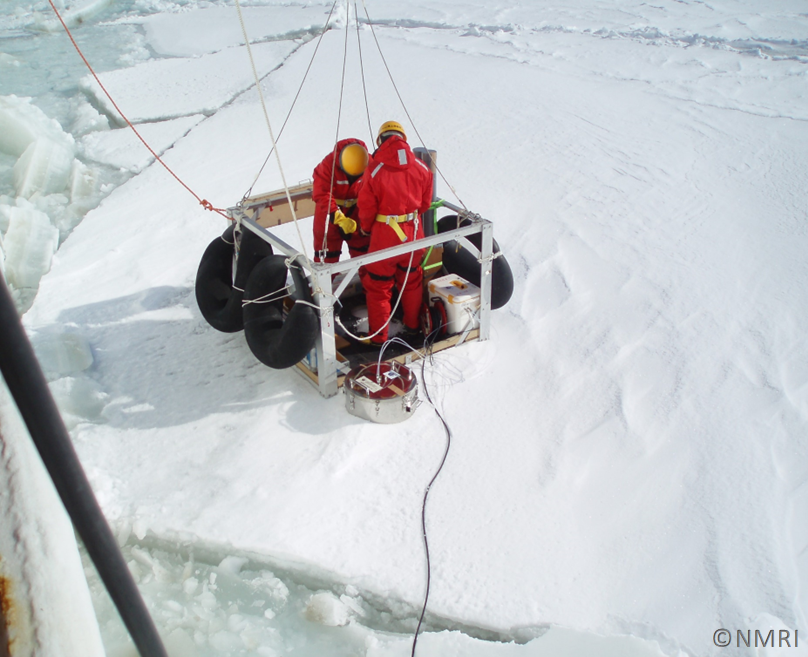
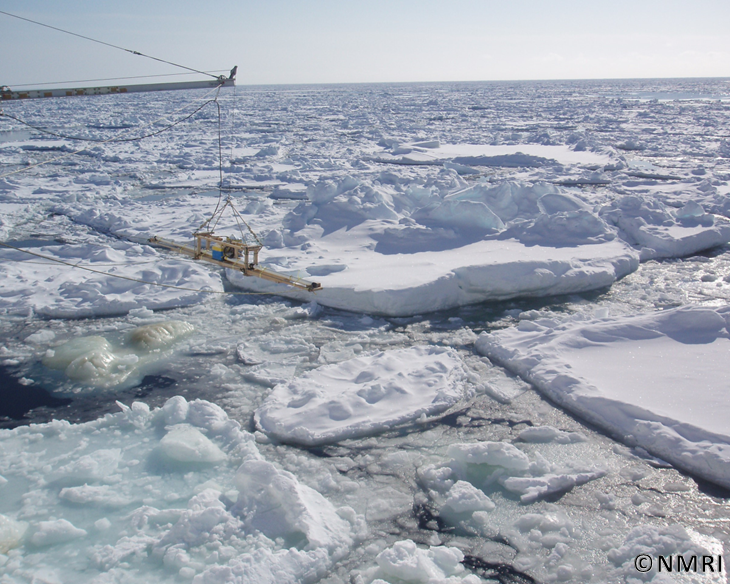
- Japan Consortium for Arctic Environmental Research (JCAR)
- Arctic Challenge for Sustainability II (ArCS II)
-
Institute of Arctic Climate and Environment Research,
Japan Agency for Marine-Earth Science and Technology -
Arctic Environment Research Center,
National Institute of Polar Research - Hokkaido University Arctic Research Center
- National Maritime Research Institute
References
- Japan Consortium for Arctic Environmental Research
- JCAR Arctic research vessel utilization plan (PDF: 460KB)
- https://www.jcar.org/documents/JCAR-WG-Plan.pdf
*Japanese text only
- https://www.jcar.org/documents/JCAR-WG-Plan.pdf
- Appendix 2-Observational activities outline (PDF: 17MB)
- https://www.jcar.org/documents/JCAR-WG-Figs.pdf
*Japanese text only
- https://www.jcar.org/documents/JCAR-WG-Figs.pdf
- JCAR Arctic research vessel utilization plan (PDF: 460KB)
- Michiyo Kawai, Takeshi Tamura, Eiji Watanabe, Jun Nishioka,
Daiki Nomura, Ryusuke Makabe, Kohei Mizobata, and Sayaka Yasunaka,
“Decadal vision in oceanography 2021: Polar oceans” Oceanography in Japan, 2021 Volume 30 Issue 5 Pages 159-178 doi:10.5928/kaiyou.30.5_159 - Arctic Data Archive System (ADS) VISHOP (Satellite data & image data viewer))
- Arctic Challenge for Sustainability II (ArCS II) website, Project Reports, "International Sea Ice Intercomparison Study Observation In Cambridge Bay, Far North Canada", (June 15, 2022)
- https://www.nipr.ac.jp/arcs2/project-report/2022-chars/
*Japanese text only
- https://www.nipr.ac.jp/arcs2/project-report/2022-chars/
- Robert Spielhagen (2001), Enigmatic Arctic ice sheets, Nature, 410, 427–428

